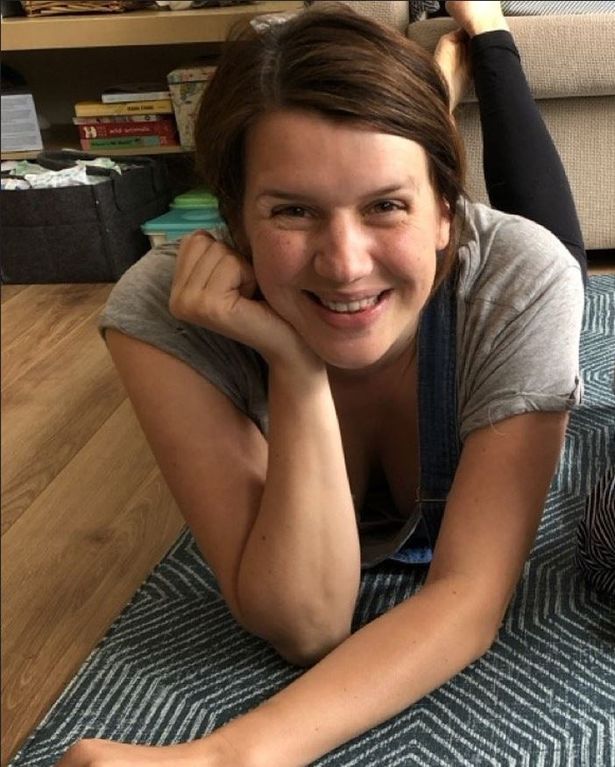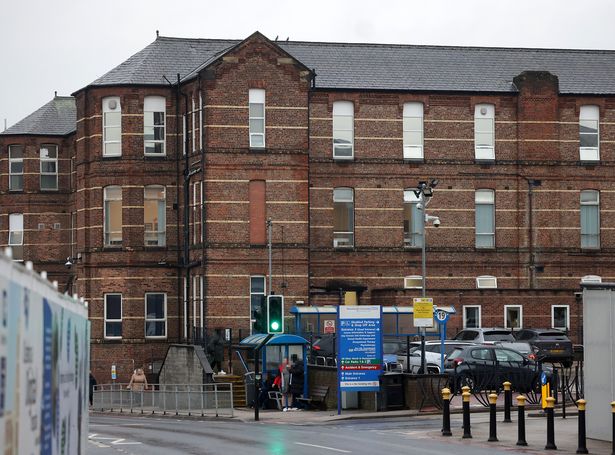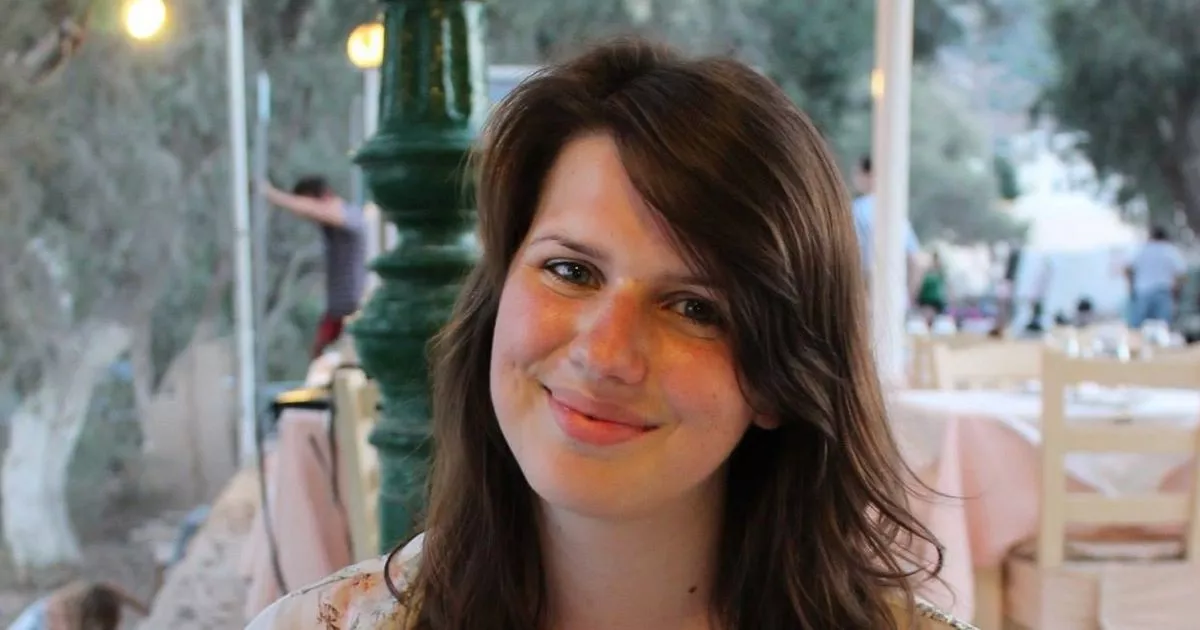A midwife, who had never resuscitated a baby before, told how she was overwhelmed by ‘blind panic’ as Agnes Cahill was born not breathing with an umbilical cord around her neck
18:32, 15 Oct 2025Updated 18:33, 15 Oct 2025
 Jennifer Cahill died just hours after giving birth to Agnes, who then died four days later(Image: MEN/UGC)
Jennifer Cahill died just hours after giving birth to Agnes, who then died four days later(Image: MEN/UGC)
A midwife has described a scene of ‘absolute chaos’ during a tragic home birth which led to the death of a mother and baby – during which vital records were noted down on an incontinence pad before being thrown away.
Jennifer Cahill, 34, died in hospital the day after giving birth at the property she shared with her husband in Prestwich.
Baby Agnes died from hypoxia, where the body is deprived of oxygen, four days later, Coroner Joanne Kearsley told an inquest today (October 15).
Rochdale Coroner’s Court heard how midwife Andrea Walmsley was overwhelmed by ‘blind panic’ as little Agnes Cahill was born not breathing. The baby had the umbilical cord around her neck, was covered in meconium – and the midwife had never resuscitated a baby before.
Two midwives were sent to assist the birth at Jennifer Cahill’s Prestwich home, arriving late in the evening of June 2, 2024.
But Rochdale Coroners Court heard how, after around 4am on June 3, essential measurements – including the baby’s heart rate and the mother’s blood pressure – were not submitted to the electronic record meant to be filled in during the labour until the afternoon of that day.
Those values were only eventually recorded using ‘recollection’, as the measurements had largely not been written down over the final three hours of the long and difficult labour.
Join the Manchester Evening News WhatsApp group HERE
Midwife Andrea Walmsley admitted that the record of the baby’s heart rate could have been wrong in the records submitted hours later by ‘one or two beats’. She broke down giving evidence, explaining to the court ‘I can’t tell you what state we were in when we were doing these notes’ following the traumatic birth.
The midwife told the court how she had been scrawling the heart rate values on a spare incontinence pad during the labour – which was then cleared away and lost in the wake of the tragedy.
They were also measuring Mrs Cahill’s blood pressure, which appeared to be high at around the 4am mark, but no record was ever made – nor of a follow up blood pressure test which was supposed to be done.
Ms Walmsley said she and her fellow midwife, Julie Turner, had to be with Mrs Cahill as the labour progressed, and that they could not spare a pair of hands to complete the electronic record.
A new electronic record-keeping system, named HIVE, had also just been introduced by Manchester University NHS Foundation Trust, which operates North Manchester General Hospital where Mrs Cahill had been cared for during her pregnancy.
The midwife wasn’t ‘au fait’ with the system, the court heard throughout today’s hearing.
 The double tragedy has ‘upended’ the family(Image: MEN/UGC)
The double tragedy has ‘upended’ the family(Image: MEN/UGC)
The home birth scene descended into ‘absolute chaos’ at around 6.30am when Agnes was finally born not breathing, said the midwife.
The midwives tried tactile resuscitation before moving onto using resuscitation equipment. But the equipment was ‘not really fit for purpose’, claimed Ms Walmsley, with the breathing mask not fitting Agnes.
The equipment had not been examined by the midwives before the emergency as there were sterile elements needing to be kept in sealed containers, admitted Ms Walmsley.
Rob Cahill, Jennifer’s husband, previously told the inquest how he had to dial 999 just after 6.45am on June 3.
He went to the hospital with Agnes. But was told later that his wife – described by her family as the ‘queen of acts of kindness’ – was also being rushed to hospital after suffering complications giving birth.
Midwife Walmsley revealed that those complications had been another postpartum haemorrhage (PPH). Mrs Cahill had struggled to deliver her placenta, and when it emerged, she was hit with a ‘gush’ of blood.
The midwife says she and Ms Taylor declared by shouting ‘PPH’ a number of times, and they started preparing Mrs Cahill to go to hospital alongside paramedics. Ms Walmsley shared she had never dealt with a postpartum haemorrhage before in a home setting.
The exact cause of death for Mrs Cahill has not yet been heard.
Over the course of the last three days, midwives have told the inquest how home births should really only be for low risk pregnancies, because of the risk of being away from the full range of treatments and doctors that only a hospital can provide if complications happen.
The court heard how both community midwives who attended Mrs Cahill’s home birth had done 12 hour shifts before delivering Agnes.
“We were always concerned about the hours we were sent out for but that’s the way it was,” said Ms Walmsley, after being asked why she never raised that she may have been unsafe to work.
“We know what it’s like working for the NHS, things are either ignored or you’re sticking your head above the parapet and going to get shot at.”
Ms Walmsley added that she tells prospective home birth patients about how on-call community midwifery teams, which deal with out-of-hours home births, have thin staffing with ‘no backup’ and limited resource.
She also tells patients that on-call midwives do not frequently deliver babies – with Ms Walmsley having gone ‘around seven or eight months’ without a birth before Mrs Cahill’s.
 North Manchester General Hospital(Image: Manchester Evening News)
North Manchester General Hospital(Image: Manchester Evening News)
Mrs Cahill was a ‘high risk’ expectant woman as she had previously suffered postpartum haemorrhage, episiotomy and tear with the birth of her first child, and was also a carrier of group B strep. Her first child went on to develop sepsis after being born, before recovering later.
Rob Cahill, Mrs Cahill’s husband, previously explained that the “traumatic” birth left his wife struggling with the prospect of delivering a baby in hospital, which she found very stressful. She also felt that she did not have enough midwife support during her first hospital delivery.
Choosing a home birth meant Mrs Cahill could better control her environment and have a calmer experience, said Mr Cahill.
Yesterday, the inquest heard Ms Walmsley give evidence of her reaction when she found Mrs Cahill’s birth plan, which indicated she was ‘very keen’ for a home birth.”
This is the most intense birth file that I have ever read,” said Ms Walmsley. “I never said anything to [my colleague] Julie, I just looked at her when I read it.”
Prior to giving birth, Ms Walmsley said she was very concerned to see that Jennifer had refused specific medication and observations, including a syntometrine injection, which would have helped prevent excessive bleeding.
Ms Walmsley says she was also never made aware, until after the deaths, of Mrs Cahill’s anaemia and symptoms of pre-eclampsia, which increased the risk of danger while giving birth.
But she added today that the detailed birth plan, which requested very low lighting and discussions to be kept to a whisper, left the midwife feeling ‘frightened’ of speaking.
“I did get the feeling as soon as I arrived that we really weren’t wanted there,” the midwife said.
She claimed in the witness box that ‘going into the home of a person we’d never met in the middle of the night’ was an ‘inappropriate time’ to challenge the birth plan of a woman who had clearly set out her wishes.
Mrs Cahill had already been advised several times against a home birth because of her risks, according to a community midwife and a doctor who had seen the expectant mother during her pregnancy.
Proceeding.
